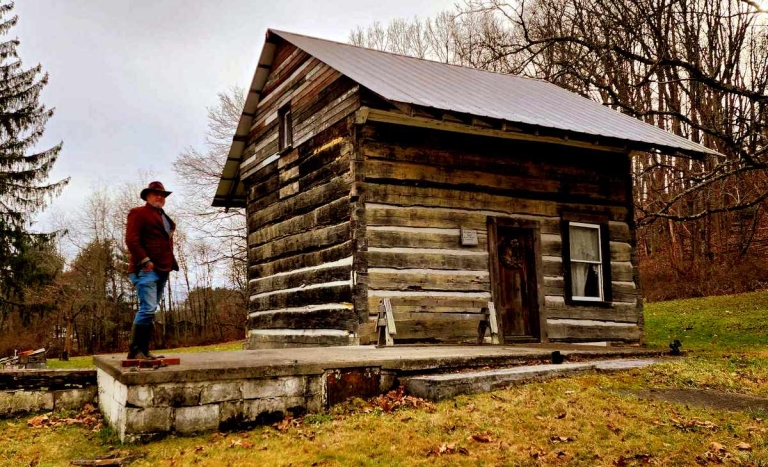
BECKLEY, W.Va. — A stone's throw from one of the busiest traffic centers in West Virginia, a spring house and one-room cabin are all that remains of a farm that was long a favorite stop for 19th-century travelers.
Now, its owners are working to preserve the cabin and the bubbling spring that watered countless horses that loped through the Appalachian wilderness.
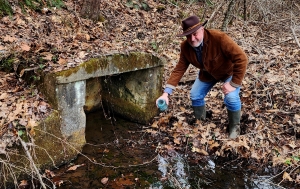
"We want to preserve the site," says Phillip Davis, whose great-great-grandfather William Harrison Phipps built the cabin of hewn timber in about 1850 along what's now Harper Road one mile west of I-77 exit 44.
"And, given that it's right off the interstate, we figure there's a way people can benefit from seeing it."
According to Davis, his ancestor William Phipps married Sarah "Sallie" Williams in 1847, after which he built the cabin where the couple raised seven children. However, all had not gone well despite the couple's proclivity for growing a family.
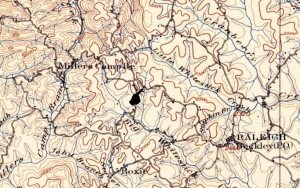
"At some point before 1872, William told Sarah he was going for a loaf of bread. As he headed up over the hill toward Mount Tabor, he killed the milk cow by hitting her on the head with a rock. He never came back," Davis says.
"A few years ago, my brother and I found his grave toward Coal River. Evidently, he had a whole family there."
Daniel Phipps, born in 1855, was the eldest son of William and Sarah. He remained in the house until he died in 1949, and Sarah lived with him until her death in 1905. Daniel deeded the property to his son Ennis, who lived there from his birth in 1896 until his death in 1974.
Ennis and his wife, Nina Mae Riffe Phipps, were known for hospitality and cared for their parents and other ill relatives when necessary.
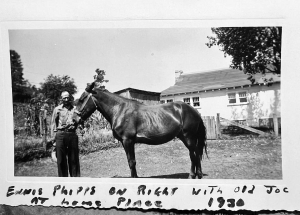
"I recall her as a kind, caring, happy person and that Ennis usually attended church without her because there was always someone living with them who needed looking after, requiring that she stay at home," Davis said.
How did so many people manage to reside in the house —most remarkably when seven children were living in the original one-room cabin?
"There's a lot of room upstairs if you'll look at the height of the walls," Davis said. "There would have been enough space for quite a few people to sleep up there."
Every generation seemed to bring changes to the homeplace, which was eventually sided in clapboard and doubled in size with a frame-built extension on the flanking side of the cabin. A kitchen and dining room were added to the rear in later years.
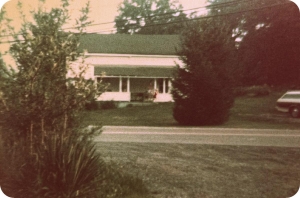
Every generation also brought changes to the landscape. When first built, the cabin looked out on a dusty wagon road. This old Virginian turnpike traveled 70 miles between two small courthouse villages (Raleigh County at Beckleyville, now Beckley, and Logan County at Aracoma, now Logan).
Variously known as the Logan Road and Guyandotte Turnpike, it wandered east-to-west through the rugged Cumberland Mountains between the waters of the New and Guyandotte rivers. It might have been used as early as the 1770s and could have been part of an earlier Native American trail.
During the American Civil War, troop movements virtually destroyed the roads in what became the new state of West Virginia. However, by the turn of the century, gravel roads such as those leading past the Phipps home were passable if muddy during the wet months.
Inspired first by the need for improved postal routes, rural roads in West Virginia began to see improvements as early as the 1880s. (Coincidentally, the first rural free delivery route in the U.S. was established in 1896 at Charles Town, West Virginia.) By the mid-1920s, the road past the house, now known as W.Va. Route 3, was paved.
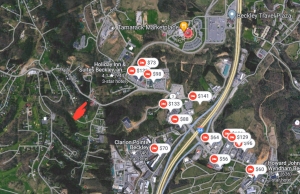
Accommodated by better roads and the development of the coal industry, the population swelled, and housing developments were established throughout the countryside near the property. By 1960, the population of the City of Beckley had swelled to 23,396 residents.
Today, more than 6,000 vehicles pass the cabin daily, while another 40,000 race by on expressways I-64 and I-77, less than a mile away. Over half a million visitors explore the nearby Tamarack arts marketplace annually, and more than a million lodge in a dozen hotels clustered around the junction of WV-3 at expressway exit 44.
In about 2010, Davis and his brother realized the homestead had failed and decided to dismantle it. At that time, they discovered the old cabin hidden inside.
"Our mother always said there was a cabin inside the house," Davis said, "and she was right."
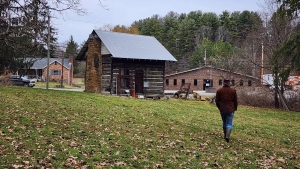
The brothers chose to keep the cabin in place and added a non-historical roof while considering methods to sustain the site perpetually.
"We don't want to move the cabin, so we're looking for ways to sustain it while we find a source of revenue," he said.
The family is engaging with the Preservation Alliance of West Virginia and the W.Va. State Historic Preservation Office for assistance in their mission.
Sign up to receive a FREE copy of West Virginia Explorer Magazine in your email weekly. Sign me up!






























